

The development of the railways during the Victorian and Edwardian eras meant that for city dwellers, and at reasonable cost, getting to the coast had become a much easier proposition for those seeking ‘freedom’. Superb railway posters, much sought after today, appeared all over the place exhorting people to hop on the train. This was a chance to get away from it all and escape from the claustrophobia of the city. The seaside had become the place to go.
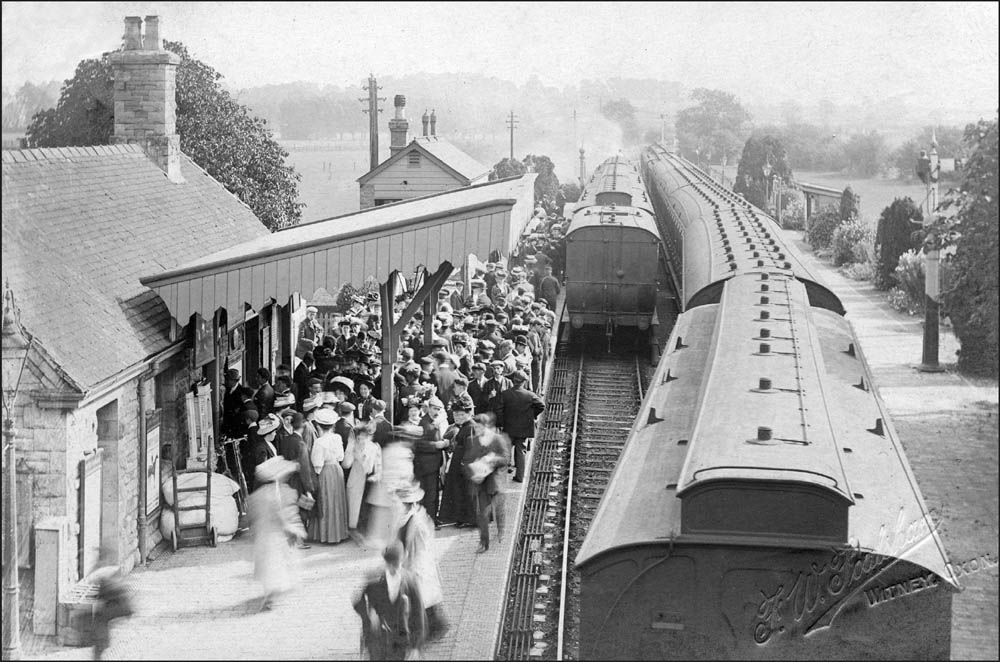
A typical and charming image from the Edwardian period, taken at Witney (Oxfordshire) railway station in around 1908. Note the profusion of ladies in large hats as the crowd jostles to purchase their tickets for an away day to the coast. Due to the slow exposure of the photograph, one can also see some ‘ghost’ like figures scurrying around on the platform. (Image by courtesy of Martin Loader.)
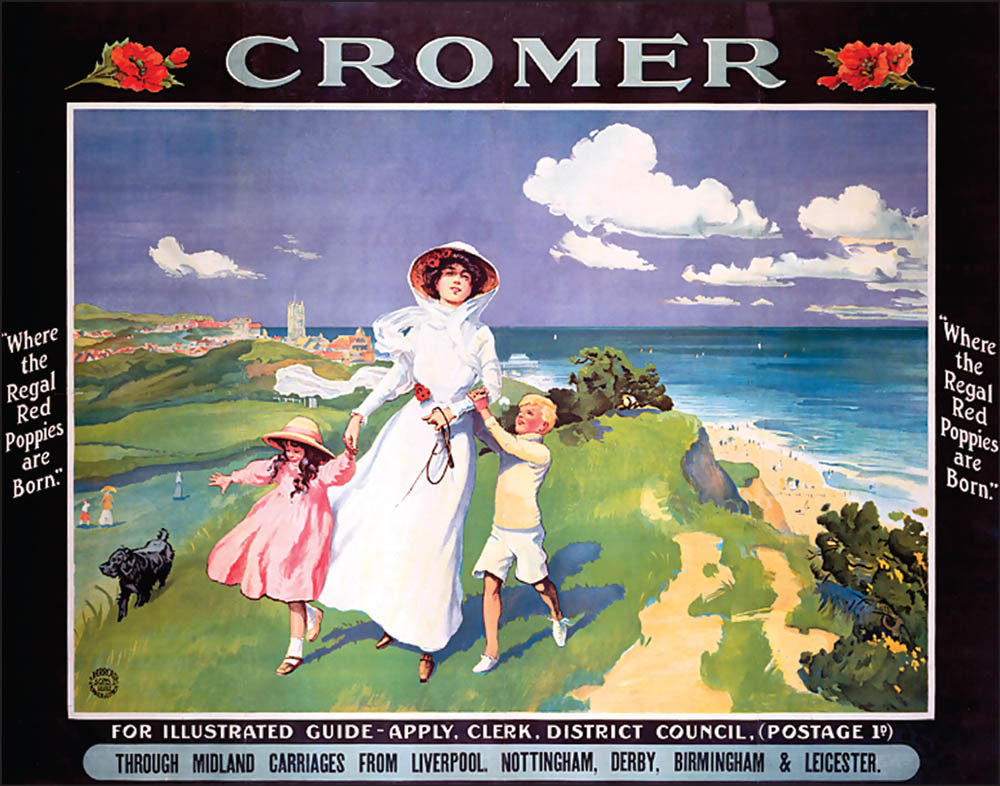
Large hats even got in on the act as depicted on this charming Cromer railway tourist poster with a mother and her two children strolling along the windy North Norfolk cliff tops.
As a result, numerous seaside resorts benefitted from a massive influx of visitors. Landladies and boarding-house keepers at popular places such as Blackpool, Brighton, Whitby in Yorkshire and Great Yarmouth would have had a field day. In Scotland, Ayr too became something of a magnet, especially for many Glaswegians escaping their sombre tenements. Trips to the ‘Med’ and flights to sunny climes, which we nowadays take for granted were, of course, unheard of for these eager visitors.
Search through any pile of early twentieth century postcards and there is more than an even chance that you will turn up numerous examples of seaside images featuring vast swathes of Edwardian folk strutting their stuff along the promenades, with the men, more often than not, sporting ‘natty’ boaters and the ladies tucked in under their massive hats.
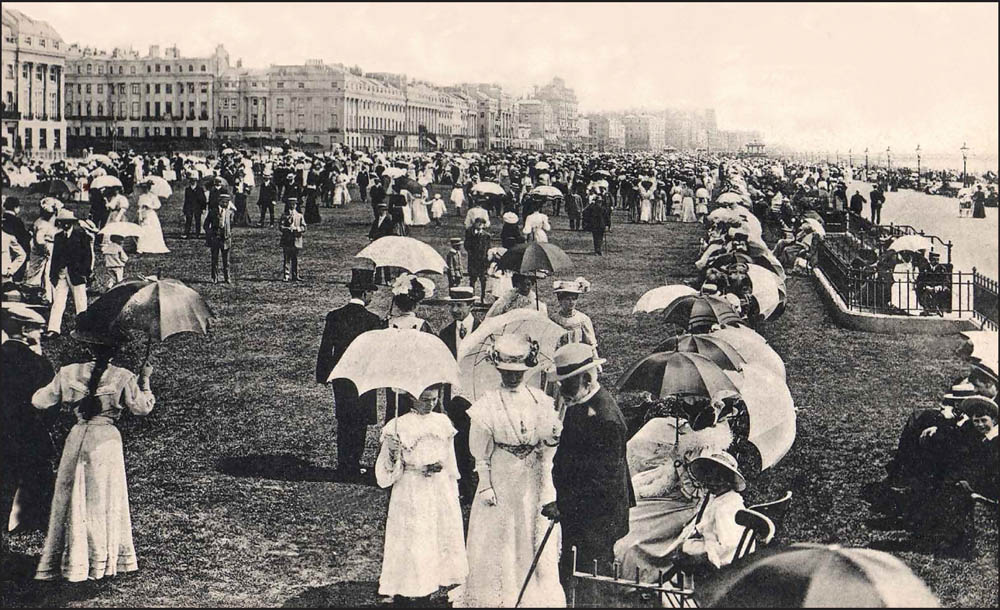
The Brunswick Lawns area of Hove, on England’s south coast, illustrates just how large ladies hats had caught on as the crowds strutted their stuff along the promenade.
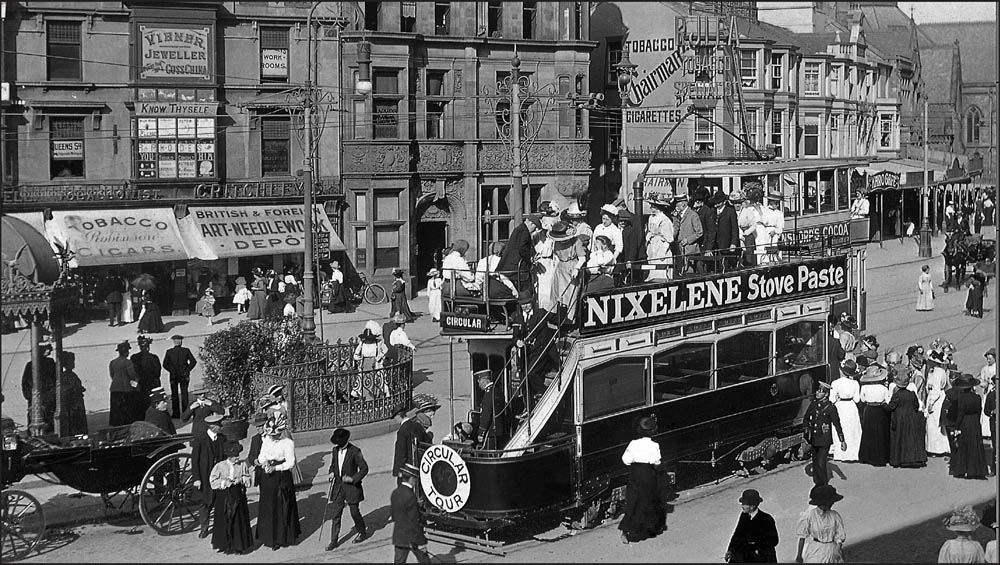
Late Edwardian times and this wonderful image shows a wealth of street detail and visitors crowding aboard a Blackpool tram to take the ‘Circular Tour’ around the resort. Note how almost every person (especially the ladies) in the picture is wearing a hat. (Image by courtesy of Brian Turner.)

On the North Norfolk coast, the Sheringham of the Edwardian period was a very trendy and socially upmarket place. In this delightful image, taken by Cecil Hewitt in the summer of 1910, we see members of his well-to-do family, with the ladies dressed to the nines in their large, extravagant hats – being transported to Sheringham railway station by a horse drawn carriage. (Image by kind permission of the Mo Museum, Sheringham, Norfolk.)
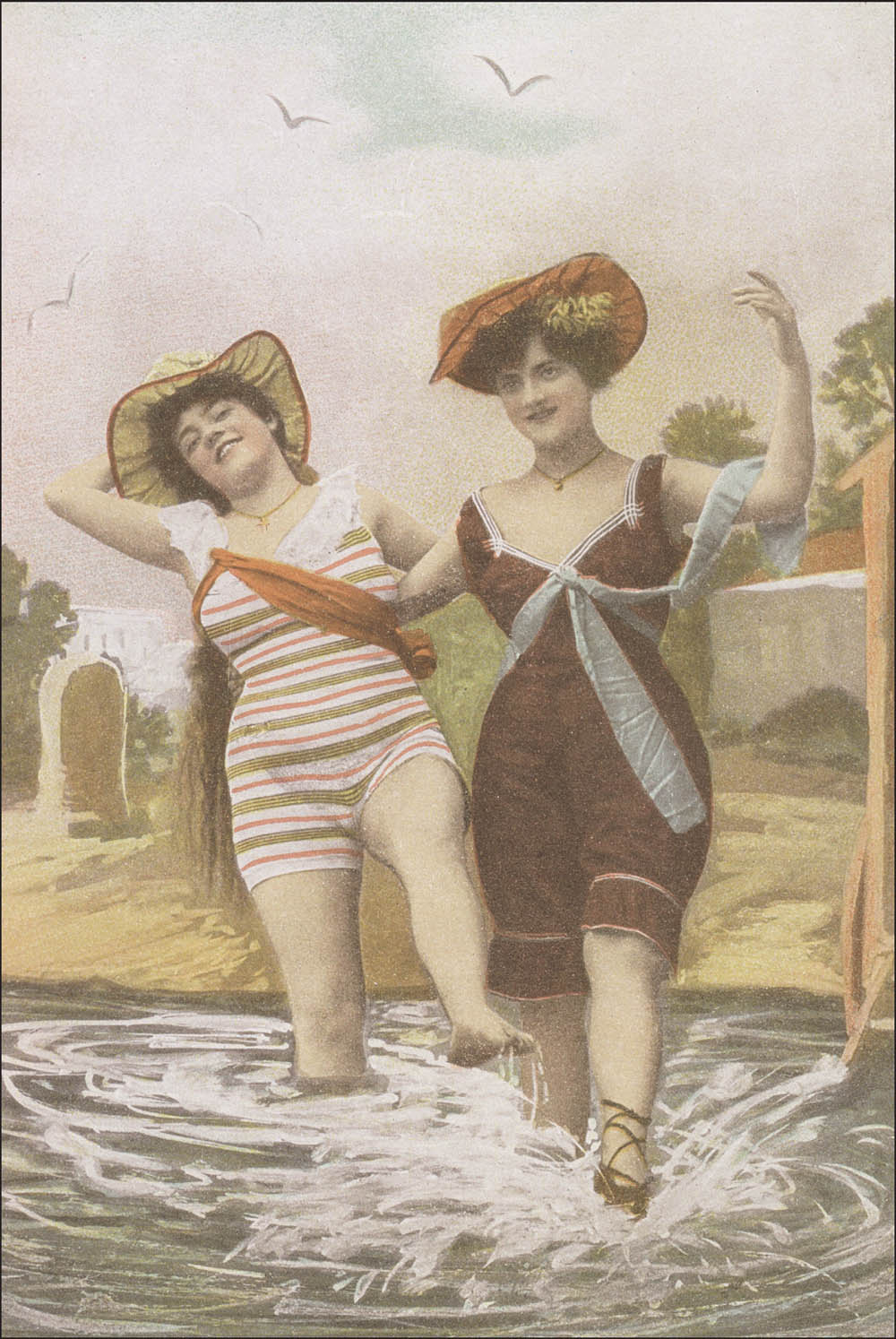
Even splashing about in the shallows, the ubiquitous large hat was never far away although this particular image, obviously retouched, probably from an Edwardian postcard, is a studio mock-up. Seagulls in the studio could have proved just a touch difficult!
Today, visit any of the more popular modern seaside resorts and one will see the usual assortment of colourful shorts, bikinis, sunglasses and casual wear etc, but a hundred years ago in those more formal times, it was a very different story. The aforementioned postcards often show great masses of people strolling along the promenades and piers, perhaps taking a carriage ride and maybe making a trip around the bay on a paddle steamer. For the ladies, this was a chance to show off those super-sized hats in what were amazing seaside fashion displays. They were everywhere.
On crowded beaches, ladies could be seen strolling on the sands in full-length dresses, topped off with the ubiquitous, large and expansive hats. Sunglasses for the ladies were not altogether established but, had they been commonplace in those days, they would have been superfluous because the hats themselves provided more than enough shade with their enormous brims! And when parading the seafront became a little arduous, one could resort to deckchairs, Punch and Judy, various amusements and perhaps a ‘Penny–Lick’* ice cream. Today, this laid back scenario seems like a different world which in reality of course, it was.
* ‘Penny-Licks’ were small, thick, clear glasses of ice cream, which folks could purchase for one penny from the sellers along the sea front. The customer would lick the ice cream from the glass, returning the empty to the seller. With the minimum of cleansing, the glass would immediately be refilled for the next customer. It didn’t take too many years for this practice to be banned on grounds of hygiene, resulting in the edible cones we know today.